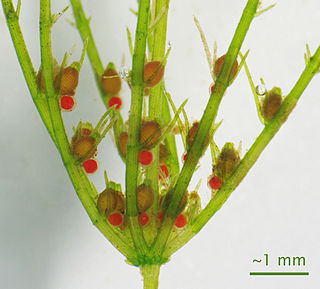
A sex organ, also known as a reproductive organ, is a part of an organism that is involved in sexual reproduction. Sex organs constitute the primary sex characteristics of an organism. Sex organs are responsible for producing and transporting gametes, as well as facilitating fertilization and supporting the development and birth of offspring. Sex organs are found in many species of animals and plants, with their features varying depending on the species.

A planarian is one of the many flatworms of the traditional class Turbellaria. It usually describes free-living flatworms of the order Tricladida (triclads), although this common name is also used for a wide number of free-living platyhelminthes. Planaria are common to many parts of the world, living in both saltwater and freshwater ponds and rivers. Some species are terrestrial and are found under logs, in or on the soil, and on plants in humid areas.

Geoplanidae is a family of flatworms known commonly as land planarians or land flatworms.

Bipalium is a genus of large predatory land planarians. They are often loosely called "hammerhead worms" or "broadhead planarians" because of the distinctive shape of their head region. Land planarians are unique in that they possess a "creeping sole", a highly ciliated region on the ventral epidermis that helps them to creep over the substrate. Several species are considered invasive to the United States, Canada, and Europe. Some studies have begun the investigation of the evolutionary ecology of these invasive planarians.
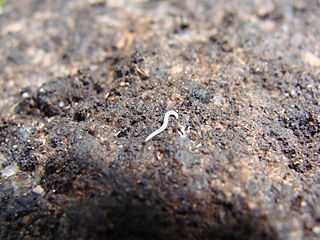
Microplaninae is a subfamily of land planarians.

Geoplaninae is a subfamily of land planarians endemic to the Neotropical region. Members of this family are sometimes referred to as the Neotropical land planarians. However, one species, Obama nungara has been introduced in Europe.
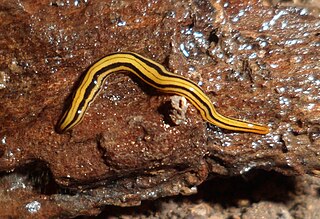
Luteostriata is a genus of land planarians from Brazil characterized by a yellow body with dark longitudinal stripes.

Obama is a genus of land planarians from South America. It contains several species adapted to human-disturbed environments, including the only invasive land planarian native to the Neotropical realm, Obama nungara, which has been accidentally introduced in Europe.

The reproductive system of planarians is broadly similar among different families, although the associated structures can vary in complexity.

Paraba is a genus of land planarians from South America.

Imbira is a genus of land planarians found in South America.

Pasipha is a genus of land planarians from South America.
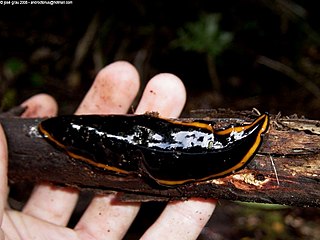
Polycladus is a genus of land planarians from South America, currently comprising a single species, Polycladus gayi, which occurs in the Valdivian Forest, Chile.
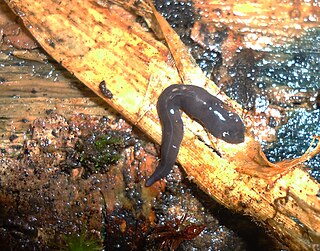
Notogynaphallia is a genus of land planarians from South America.

Caenoplana is a genus of land planarians from Australia and New Zealand.

Arthurdendyus is a genus of land planarians from New Zealand. It was erected in 1999 and includes the invasive species Arthurdendyus triangulatus, known as the New Zealand flatworm.

Amaga is a genus of land planarians from South America.

Bogga is a genus of land planarians from South America. It is monotypic, being represented by the single species, Bogga bogotensis, which occurs in Bogotá, Colombia.
Beauchampius is a genus of land planarians in the tribe Pelmatoplaninini.

Difroehlichia is a genus of land planarians from South America, currently comprising a single species, Difroehlichia elenae, which was found in a ferruginous cave in the municipality of Conceição do Mato Dentro, state of Minas Gerais, Brazil, which is part of the Cerrado biome.

















